If you want to describe the ultrarunning of Ian Lye using mere numbers, it is 1,730 hours, or 15,795 kilometres, or even 409,001 metres of elevation gain.
In simpler terms, it is 72 days, almost two-fifth the circumference of the Earth, or about 46 times the height of Mount Everest. These are just clocked since 2018.
From running 251km across the Sahara Desert at the Marathon des Sables (MdS) to raise money for stray dogs in 2014, to traversing across black ice during a hailstorm in Hong Kong in 2016, Lye’s journey with ultrarunning has brought him far and across hostile yet spectacular terrains.
But what makes a man want to devote the time, blood, sweat and tears to accomplish such feats? In the case of Lye, it was not something he had planned but one he grew into.
“In 2010, I was looking for something to keep myself active and take the anxiety away from the results of job applications. My friend (Chin) Wei Chong introduced me to the idea of doing marathons. He had done one before, so there was this competitive drive that if he could do one, so could I. That was when I started training and once I accomplished running one, I started thinking ‘Okay, this is done, what else can I do?’ It then progressed to the world of longer runs as the next challenge became ‘How far can I go?’” he tells TheHomeGround Asia.
An ultra distance is anything longer than the regular marathon of 42.195 kilometres and after Lye had the initial taste of running his first ultra marathon, he had his sights and legs set on more.
“I remember hearing about the Sundown100 in 2013 and we signed up for it. It was more of a group activity and adventure. When we finished the 100 kilometres I thought that was as far as I was going to go. But I had hit that urge at the back of my mind and it got itchier and itchier. Once you’ve finished something (exhilarating) like that, there’s always this void, especially after you’d put in so much effort, time, and emotional investment into the quest for months. So we started looking abroad and came across this desert race and picked up from there,” he says.
Lye was fresh off the back of the Ultra-Trail du Mont-Blanc (UTMB) CCC 2022, where he completed the race of 99.10 kilometres with 5990 metres of elevation gain in 16 hours 32 minutes and 30 seconds when he spoke to TheHomeGround Asia. It was the fifth time Mr Lye participated in the famed and gruelling race, an accomplishment he holds dear.
His unexpected love affair with running has taken him many places and taught him many lessons.
The long and winding road
When Lye is not sprinting up mountains, his mind races over numbers at work in the insurance sector. Lye is currently based in Geneva, Switzerland with his wife and daughter. They had moved there in 2016 after his wife was offered a job in Zurich.
The move was to Lye’s advantage as it placed him closer to the races and trails he loves. Since 2016, he has participated in over 25 mountain races.
It was at the 2021 UTMB Sur les Traces des Ducs de Savoie (TDS) when Lye saw the most beautiful sight of his life.
“I was coming out of the station in Bourg-Saint Maurice. It was a 2,000 metre climb and the hardest segment of the entire UTMB series. The first 1,000 metres was very steep and we were doing it at night. My calves were burning and I was just trying to keep up with the guy in front of me and keep a distance with the guy behind me. As I climbed through a series of switchbacks, I looked to my left and realised we were above the clouds. It was like a sea of clouds. It was just so mind-bendingly beautiful. There was a full moon above, illuminating the sea of clouds. I could see flecks of light from the town below through the gaps in the clouds. All I wanted to do then was take a moment to enjoy the scene but I really couldn’t because I was racing. All I could do was take a glance every time the switchbacks changed directions. I still remember this really vividly as if it was just last week,” he says.
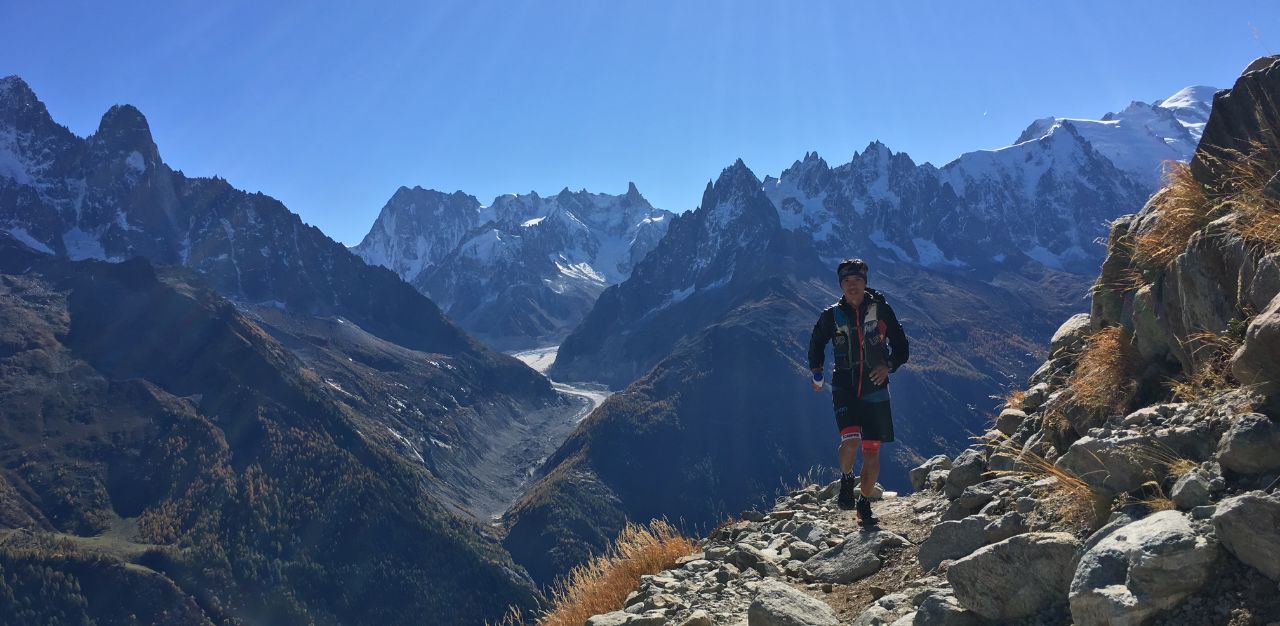
And along with each picturesque scene Lye recollects another, but for more painful reasons.
“It was in 2019, in Transvulcania, Spain where I fell and I smashed my head into a rock. At that moment I thought my race was over because I saw blood streaming down my face and I remember feeling shocked. But I was able to finish the remaining 20 kilometres of the race with the gash in my face,” he says.
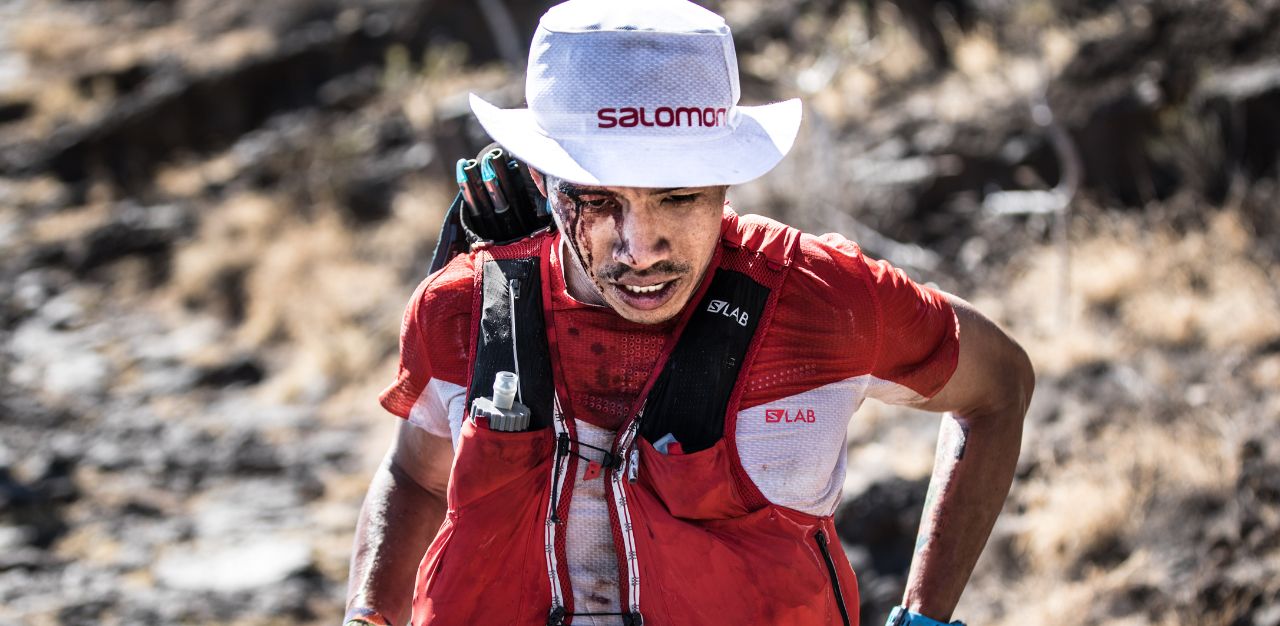
Risks, adventures, flow state, and ultrarunning
When you are racing against the clock, other runners, unforgiving climates, treacherous terrains, and ultimately yourself, the risk and thrills are just two aspects of the sport that Lye has learnt to deal with and evolved overtime.
“I like the feeling of being uncomfortably alive but I wouldn’t say I chase it actively, because when you are in the mountains and if you are intentionally seeking risk, that is not a smart thing to do. You have to respect the terrain. I sit in the ultra running space primarily. The challenge that I seek comes more from the distance and the unknown terrains and new places, but not so much for the thrill itself,” he says.
He adds, “That being said, when I encounter certain risky situations, I feel this adrenaline rush, because my body kind of kicks into self-defence mode. My senses are heightened and I feel really alive. If I was not enjoying it, I focused on making sure I got through this in one piece. But afterwards I would feel the rush. There are people who thrive and feed off that but not for me. I don’t go into every race thinking I want that adrenaline rush.”
Lye says that his perception of risk has evolved overtime. Outside of running, he shares how he used to seek risk and adventure when he was younger and would spend his time backpacking through Europe alone. He even spent four weeks in Syria where he learnt Arabic.
“These were things that kept me going back then and that was my way of finding that rush and adventure that running today takes. My appetite for risk has also evolved with age. I was in my 20s then and I didn’t have anybody to answer to other than my parents. Today I have my wife and daughter and that whole calculus changes,” he says.
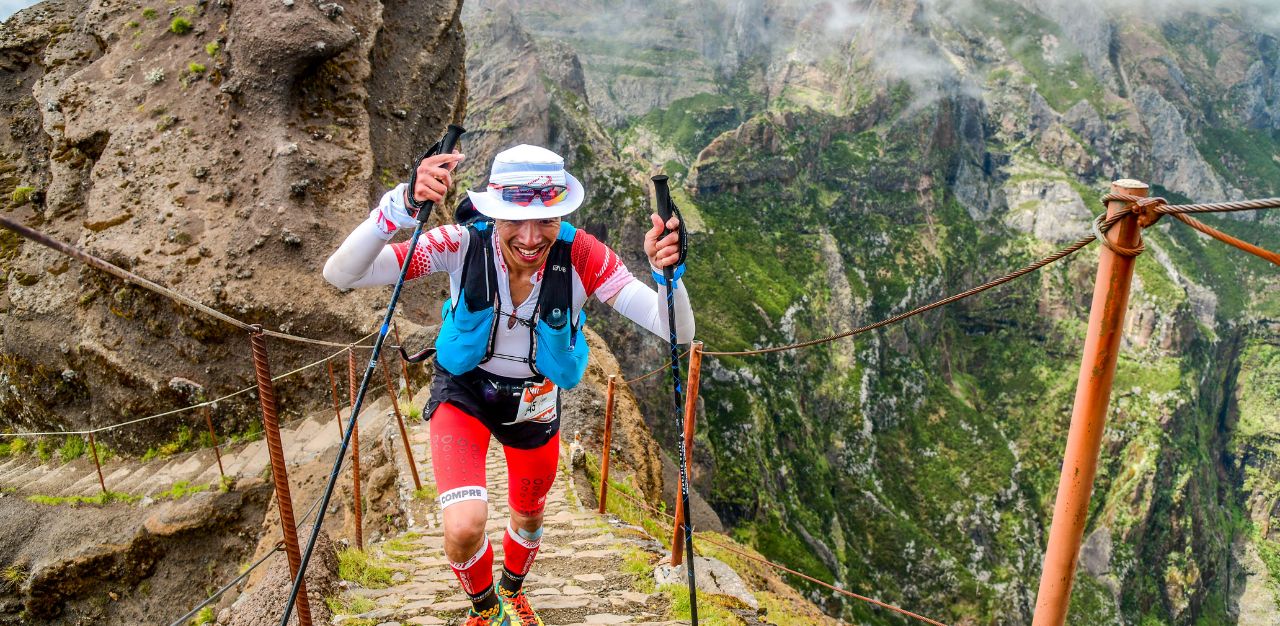
Unfortunately, the 2021 race, where Lye was mesmerised by the clouds, was cancelled halfway due to the death of a competitor.
“I used to focus on getting from checkpoint to checkpoint. And while that’s still true now, I find myself focusing on just the next step. So a 100 kilometre distance has become bogged down to this game of inches. That’s one of the biggest lessons I’ve learned where I’m not letting myself be distracted by other external factors that I can’t control. All I can control is this next step in front of me and on thoughts like ‘I’m going to cover it to the best of my ability’, ‘Am I going too hard?’, ‘Is my breathing still ok?’, and ‘Am I gasping for breath because that’s not sustainable?’. It’s about being present in the moment that everything else is not important. Time flies and before you know it, you’ve reached the next checkpoint,” he says.
Lye says he goes into a race with the mindset that it will hurt. Ingrained in him by his coach, Ryan Ghelfi, is the focus on the things that could go wrong. By visualising different scenarios and preparing for the different outcomes, Lye is able to problem-solve the situation having already gone through the steps in his mind. He adds that the key to traversing long distances is about managing the fatigue over the course.
“I think it’s accurate to say that ultramarathons are events where the one who slows down the least wins. It’s not a 100 metre sprint, where you’re trying to be the fastest. Even the top guys like Kilian Jornet suffer at the end. There’s this progression where you start off feeling fresh and good then progressively your mental and physical state deteriorates. It’s all about managing that decay and ensuring you slow down less than your competition,” he says.
Highest highs and lowest lows of ultrarunning
2021 was also a difficult year of racing for Mr Lye as he had to deal with burnout.
“Different people approach this differently. Some might have had a bad race and immediately dive back into it. I’ve been slightly guilty of that. When I have had a bad race or a bad day, I feel this emptiness where all the investment that I put in building up to this event was wasted and I feel this sense of failure. I often question myself what I could have done differently? 2021 was probably my most difficult year,” he says.
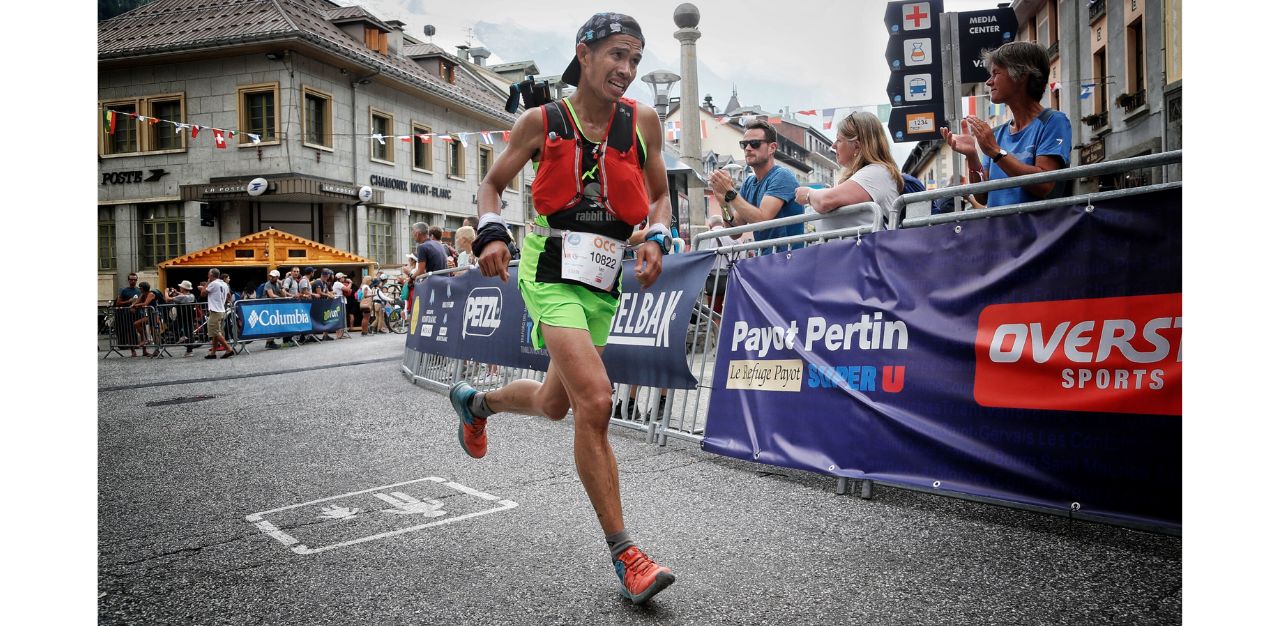
After the cancellation of the 2021 UTMB TDS, Lye took part in another race to burn the fitness that he had built up. On the week of the race, while recovering from an illness, he made the decision to continue. Around the midway mark, Lye started feeling weak and withdrew from the race. Having never quit a race before until then, it was not a decision he took lightly.
“But the emotional fallout from that race and the disappointment of the whole year stuck with me for a while. I felt a lot of emotional and physical burnout and I told my coach that I needed to take an extended break,” he says.
Lye spent the next few months away from running to “flush it out of my system”. After some time away and a visit to Singapore, he says he returned with renewed focus and determination.
According to Lye the sport of ultrarunning has a longer lifespan of performance than other sports and the most experienced runners are the ones who do best.
“What’s more important is to be smart about how you invest emotionally otherwise you get burned out. There’s a lot of stories of people who did really well in the sport for a handful of years, flamed out and never came back. I’m in this for the long haul and my approach is to stop if I need to. I always take about a month completely off to let the mind and the body completely reset and keep that fire going,” he says.
There and back again
Having clocked a fair share of kilometres on his feet, Lye is not looking to slow his pace and has more races to compete and places to see on his bucket list.
“I think the big ones I still have on my checklist are Western States 100-Mile Endurance Run in the United States. It’s probably the most historic 100-mile in the world and it’s very hard to get into. There’s a long process with a lottery system and limited places. The other one is the La Diagonale des Fous also known as the Madmen’s diagonal in Reunion Island. It’s 100 miles without using polls because it’s all jungle terrain. I’d say it’s much more difficult than UTMB and I don’t believe any Singaporean has ever been there,” he says.
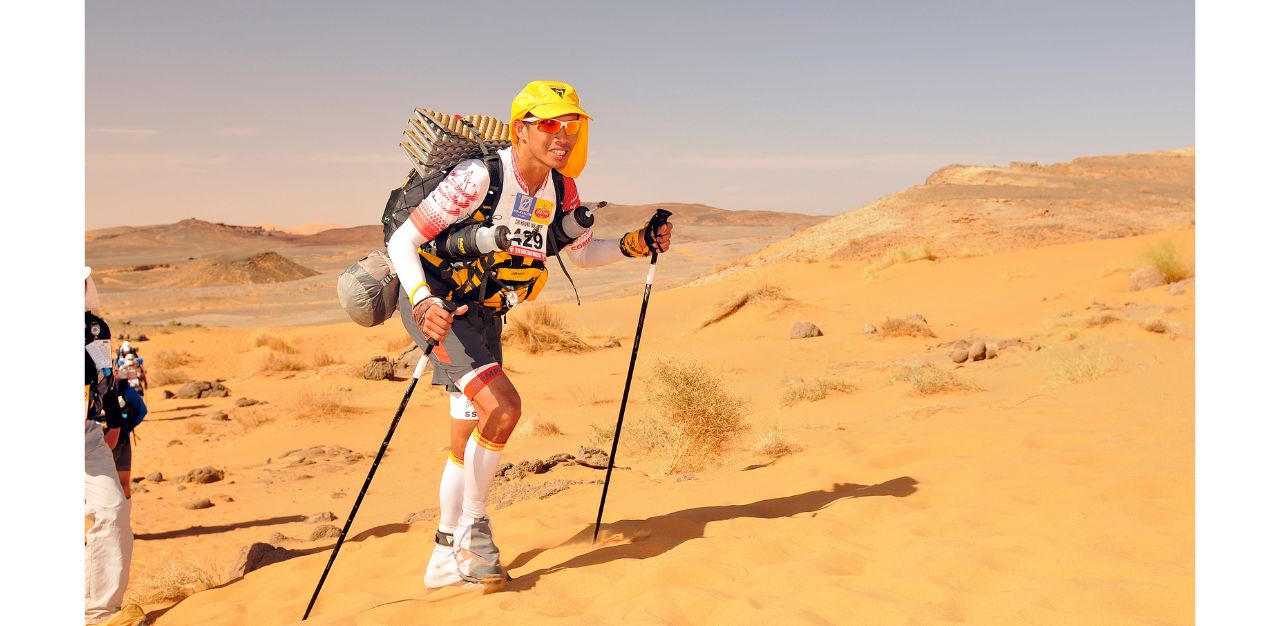
But beyond the records that Mr Lye has set out to conquer, running itself remains an act that keeps him rooted and is portable in his personal life.
“Putting aside races, the act of running or training for the race gives me the opportunity to clear my head during a busy day at work and helps me reset and refocus when I come back. Having been through uncomfortable periods in races, it’s helped me shrug off good and bad days. There’s a saying ‘never get too high, never get too low’. Just stay even-keel and learn how to roll the punches in your daily life. So that’s something I think I’ve applied to mine. If I have to stop running, those lessons won’t go away,” he says.
When asked how he would spend his time if he had to give up running, Mr Lye shares that travel photography and hiking are two things he would like to revisit. And even for someone who spends a great deal of time on running, finding the willpower to get on his feet is a daily struggle as well.
“Very often it’s this push and pull. A lot of days, I don’t feel like training and getting out the door. It’s too cold, it’s too hot, I’m lazy. But it gets you something to focus on. Often I’m looking forward to the offseason and I think about it being my last season, where I’m done with this and can do other things, but then I can’t ever imagine that life of comfort either because without that sense of purpose you feel a bit lost and unanchored,” he says.
Sharing his advice for anyone that is seeking to improve themselves, Mr Lye succinctly says “keep showing up”.
He says, “The biggest thing I’ve learned over the years is consistency. For me, it’s the biggest factor in getting better through sheer repetitions and it doesn’t have to be anything spectacular. My coach shared with me this baseball analogy: don’t go for the home runs, keep hitting singles and doubles. I see some people doing heroic runs like a 50 kilometre training run. So while everyone’s blown away by that, if I would just run 5 kilometres a day for 10 days straight, I’ve done as much and wouldn’t need as much time to recover because it’s much more sustainable. So hitting singles are much more consistent and while it might not be as spectacular as a home run, being consistent will always get you to where you want to go. It’s about trusting the process and the hard work.”
Related: Defying age barriers at world track and field championship
Join the conversations on TheHomeGround Asia’s Facebook and Instagram, and get the latest updates via Telegram.












